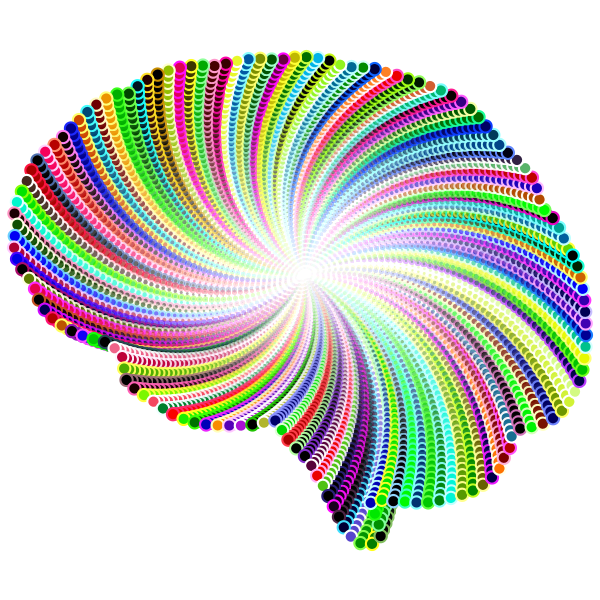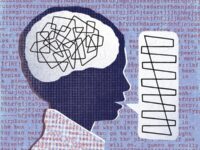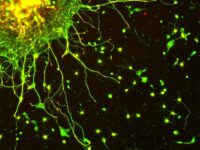Common psychedelics such as mushrooms and LSD are often revered for their hallucinogenic properties and the way they alter one’s perceptual experience, but what really is going on behind the scenes to generate this shift in consciousness? What is changing within the brain? Scientists ultimately attribute it to one thing: chaos.
Psychedelics generate changes in sensation and perception by changing how neuronal circuits in the brain function. After ingestion, the drug molecules enter the bloodstream through the digestive system, then cross into the brain. Once inside of the brain, these drugs cause temporary chemical imbalances that lead to changes in the wiring of neurons in the brain, ultimately producing the sought-after experiences of euphoria, warped perception, and even hallucinations.
Within the brain, there are networks of millions, billions, and trillions of neurons that communicate with each other and regularly produce everything we experience including sensations, perceptions, thoughts, and actions. Under the influence of a psychedelic, the resulting chemical imbalance within the brain leads to dysregulation of these networks and an increase in the diversity of the signals they use during communication. This means that neurons are communicating with neurons they don’t normally communicate with, or increasing or decreasing the levels of communication with previously-established networks. The increase in signal diversity is, in essence, an increase of entropy in the brain. This neural entropy is characteristic of psychedelic experiences and has been found experimentally to be the driver of the most well-known effects of psychedelics, such as altered subjective experiences and mood and personality changes.
This neural entropy is characteristic of psychedelic experiences and has been found experimentally to be the driver of the most well known effects of psychedelics, such as altered subjective experiences and mood and personality changes.
In 2014, Dr. Carhart-Harris and colleagues published a theory coined the Entropic Brain Hypothesis (EBH) detailing this phenomenon. The theory proposes that there exists two states of consciousness: primary consciousness, with uninhibited cognition and organized brain network function, and secondary consciousness, characterized by inhibited cognition and higher entropy of neuronal activity. This theory maintains not only that neuronal entropy determines a person’s state of consciousness, but that subjective experiences and changes in perception characteristic of psychedelics are directly related to this entropy.
In addition to the determination that increased entropy in neural activity is the main mechanism mediating acute alterations in consciousness, scientists now believe that the entropy may also mediate longer term changes in the brain. Evidence suggests that there are structural changes occurring between neurons during psychedelic drug use that disrupt neuronal circuitry in a semi-permanent way.
Invoking entropy of neuronal communication can cause existing neuronal connections to be strengthened and even stimulate the generation of new connections. Psychedelics such as LSD and psilocybin, or mushrooms, have been found to be associated with new growths of neuronal neurites, spines, and synapses — all structural elements of the cell that facilitate communication. These new growths lead to more connections between neurons whether they were previously connected or not. Thus, structural changes facilitated during periods of psychedelic use are not simply temporary alterations in consciousness, but can lead to lasting effects on sensation, perception, and cognition.
Can these long-lasting changes serve a therapeutic purpose? The answer from the scientific community is a resounding yes.
The next logical question to ask is: can these long-lasting changes serve a therapeutic purpose? The answer from the scientific community is a resounding yes. Historically, ketamine has proven this approach worthwhile; though primarily categorized as an anesthetic, ketamine and it’s psychedelic-like properties have proven successful as an antidepressant due to its ability to encourage the formation of new synapses — the most fundamental unit of neuronal communication — in areas of the brain responsible for emotional regulation which are often dysfunctional in depressive patients. This structural change in the brain of patients leads to subsequent functional changes that essentially serve to “rewire” the brain. Some functional changes observed experimentally thus far include increased focus, emotional balance, and an increase in meaningful psychological insights about oneself or the world in general. Furthermore, it has been suggested that common psychedelics such as LSD and psilocybin can have similar effects to ketamine by stimulating structural and functional changes in the brain that lead to positive therapeutic outcomes in cases of depression, anxiety, and related disorders.
These novel psychedelic therapeutic approaches look promising already and there is even more to look forward to in the future. Thus far, the cellular and molecular mechanisms of psychedelic experiences have been characterized, but we have yet to understand the whole-brain mechanisms that drive these changes in states of consciousness. As new models are developed, tested, and debated, we can work diligently toward a more thorough understanding of the brain and our own experiences.
Image Source: Free SVG






